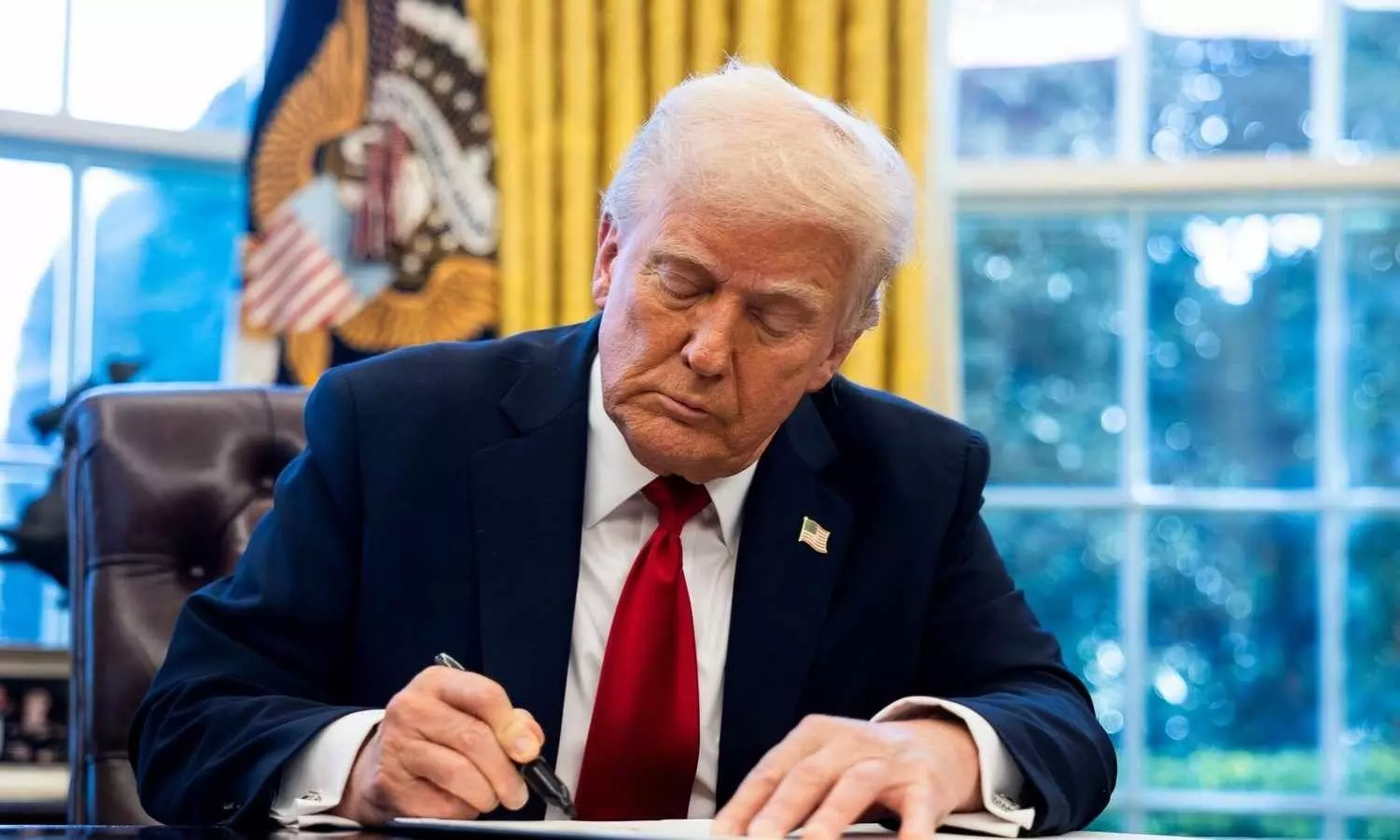Penalty apart, the US tariff hits India amid failed US-India trade talks
The latest U.S. move to impose a 25% (or 26–27%) tariff on Indian exports has disrupted stalled U.S.–India trade talks, hitting key sectors like gems, textiles, electronics, and diamonds.
Penalty apart, the US tariff hits India amid failed US-India trade talks

Even as the US slaps India with 25 per cent tariffs since August 01, and hits a panic button of additional unspecified penalties for India’s ongoing defense and energy ties with Russia, the trade saga is far from over.
Shifts in global trade order are unlikely to be smooth. Near-term, brace for volatility in capital flows and asset classes, with INR bearing the brunt and feeding into RBI’s reaction function. The RBI, as per Emkay, will need to confront various push and pull factors via financial market route, even with the growingly easing bias.
It is not clear yet if previously spared sectors, such as pharma, electronics, energy, and minerals, would continue to be exempted for India too. The deadlock seems to have emerged from India’s refusal to concede on opening up domestic agri and dairy – the main bone of contention. Although trade talks appear to have stalled, we believe this saga is far from over. Beyond pure economics, such negotiations carry significant geopolitical weight. Despite a potential shift in the balance of negotiation power, we believe both sides are still likely to push for a deal soon.
India’s exports to the US are only 2 per cent of GDP, with much lower value-add embedded in them. India’s US exports might drop by USD30-33bn in the new regime, not adjusting for the complexity of dynamic cross-country hits/responses. While the announcement adds some downside tail risk, it is too early to consider actual forecast changes.
The FX volatility is likely to feed into RBI’s reaction function, partly constraining further near-term easing at a time when inflation dynamics have turned highly favorable. While experts feel that a trade deal will be eventually negotiated, persisting trade/tariff noises and policy uncertainty are likely to keep volatility intact. RBI may eventually follow suit, albeit will need to also confront risk-aversion noise via financial market channels.
The main sectors that are affected are textiles, auto ancillaries, chemicals and, possibly, OMCs, if Russian crude imports are stopped. There are potential risks to pharma and EMS if the current exemptions are terminated in the new regime.
When the US had initially imposed tariffs, Icra had lowered its forecast of India's GDP expansion to 6.2 per cent for FY26, presuming a tepid rise in exports and a delay in private capex. The tariff now proposed by the US is higher than what analysts had anticipated, and is therefore likely to pose a headwind to India's GDP growth.
The extent of the downside will depend on the size of the penalties imposed.
While Indian MSMEs are momentarily impacted, this is also an opportunity. With global buyers looking to de-risk from overdependence on select geographies, as per PHDCCI, India is emerging as the most credible, democratic, and scalable alternative.
Despite policy making of US, market was expecting a tarriff deal to work out as longer term US India strategic interests are aligned.
EoM.

